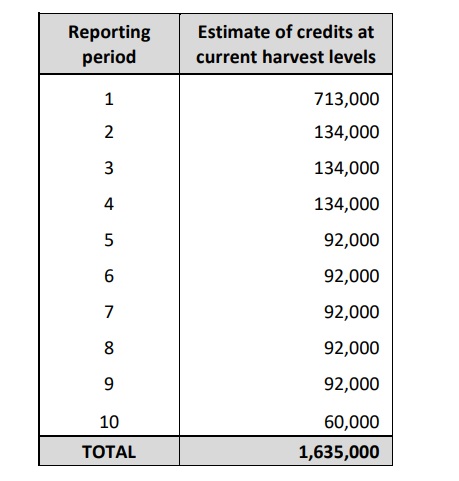Acadian Timber Corp. provided an update on its ongoing carbon credit project.
“Although the carbon credit model is still subject to completion of third-party verification, we are pleased to have made significant progress and to be able to provide an update,” commented Adam Sheparski, President and CEO. “Pricing and the successful marketing of our credits will ultimately determine the impact to our financial results.”
During 2021, Acadian executed its first carbon development and marketing agreement to develop voluntary carbon credits on the portion of its Maine Timberlands that is subject to a working forest conservation easement. This project commits Acadian to balancing harvest and growth, and requires long term planning, annual reporting, periodic carbon inventory verification, and maintenance of the existing sustainable forestry certification.
The initial model for the project has been completed and estimates of carbon credit volumes for reporting periods (years) 1-10 are as provided below:

Preliminary credit volumes have been submitted to third-party verifiers, who will audit the model. Accordingly, the final issued volumes could vary from the estimates presented. Under the current timeline, credits are expected to be registered on the American Carbon Registry in the 4Q 2022, with the potential for sales to be realized immediately thereafter. The impact to Acadian’s financial results is subject to the successful marketing of the credits and to the timing of, and prices obtained from, contracts negotiated with third parties, which are not yet in place. After the share of proceeds allocated to the project developer and project related expenses, Acadian is expected to receive approximately 84% of gross revenues from any sale of the carbon credits.
Acadian Timber Corp. is one of the largest timberland owners in Eastern Canada and the Northeastern U.S. and has a total of approximately 2.4 million acres of land under management.
